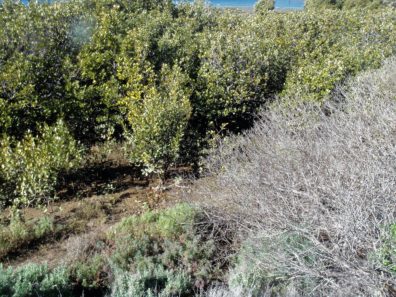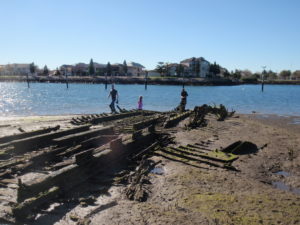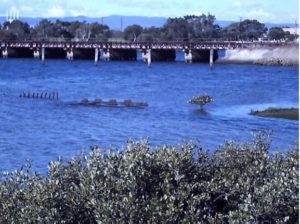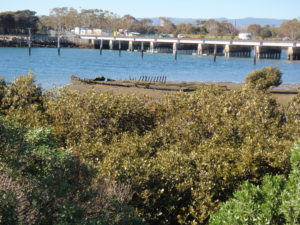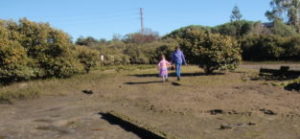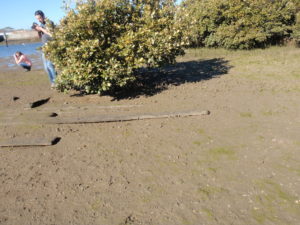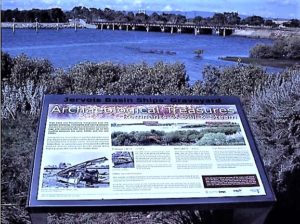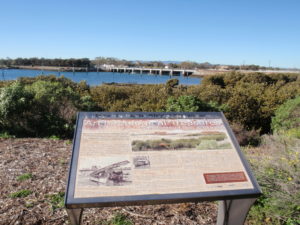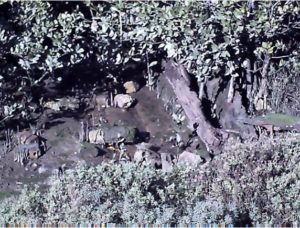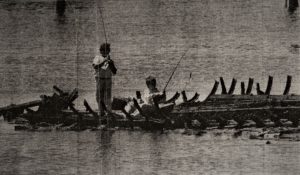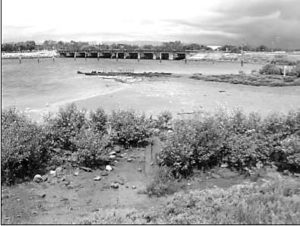The Growth of Mangroves at the Jervois Basin, Ethelton
by Steve Reynolds
On 20th July 2019, I visited the Jervois Basin Ships’ Graveyard, along with Phill McPeake’s son-in-law Danny and his brother Gerard, with some of their children. We were there to record details of the Trafalgar wreck as part of the GIRT Scientific Divers program.
Danny & I, along with Danny’s daughter Maddie, had done some earlier training through GIRT (Gathering Information via Recreational and Technical) Scientific Divers. The Trafalgar was our first choice to gain some experience in the methodology to be used.
We arrived at the site around 90 minutes before low tide, which would give us a good chance of recording the wreck’s details whilst the tide was out. It was a fine but windy day. We had to scramble through the mangroves to get to the wreck. Old clothes and boots were a good choice for the muddy conditions.
We were visited by dolphins and birds whilst we conducted our recording: –
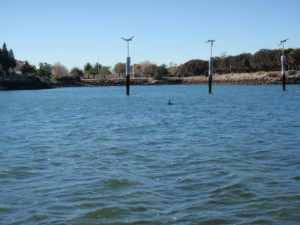
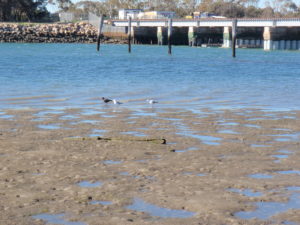
I was able to take a good look around the area whilst Danny and Maddie did all the measuring of the Trafalgar. There are many artefacts scattered around, and signs of old structures too. I met a local fossicker who was able to explain much about the site. It turned out that I knew his stepfather and sister.
Danny and Maddie pointed out the location of the Alert in the mangroves and I was able to take some photos of the wreck’s remains.
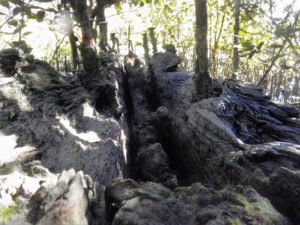
I later recalled a visit to the site years earlier. That visit turned out to be in 2011. Details were reported in our Newsletter No.384, August 2011. I decided that I wanted to compare photos from 2019 with those from 2011. I found my earlier photos and posted a series of these on Facebook at https://www.facebook.com/photo.php?fbid=10218058223074593&set=pcb.10218058225474653&type=3&theater , https://www.facebook.com/photo.php?fbid=10218058559843012&set=pcb.10218058561283048&type=3&theater , https://www.facebook.com/photo.php?fbid=10218058566443177&set=pcb.10218058572443327&type=3&theater and https://www.facebook.com/photo.php?fbid=10218058586403676&set=pcb.10218058591803811&type=3&theater .
I had taken this photo of the Trafalgar partly submerged in 2011: –
Partially submerged wreck of the Trafalgar in 2011
There is a small mangrove tree, Avicennia marina, in the water next to the wreck. Here is a photo that I took upon arriving at the site in July 2019: –
The Trafalgar just before low tide in July 2019
It shows a taller, bushier tree inshore of the Trafalgar. Here are some close-up shots of the same tree: –
Close-up shots of mangrove tree
I was also able to compare photos of the mangroves around the Alert from 2011 and 2019: –
Interpretive signage close to the Alert in 2011
Interpretive signage close to the Alert in 2019
The site of the Alert in 2011

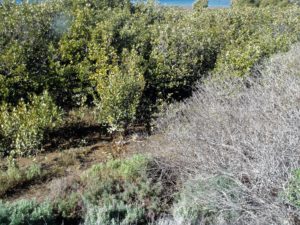
Faith Coleman saw my Facebook posts and she kindly directed me to Mangrove Cove (Patangga) monitoring program , a more scientific account of this topic.
This photo shows mangroves growing around an abandoned pontoon: –
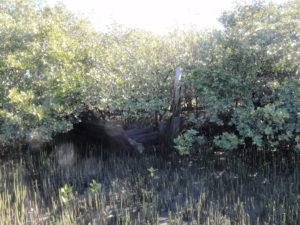
This pontoon is described in some reports as being openly visible. Just for good measure, here is an old photo of the Trafalgar: –
The Trafalgar in 1988
It was taken by Martin (Jacka?) around 1988. It featured on the front page of The Advertiser on 30th December that year. Here is a similar photo of the wreck in 2019: –
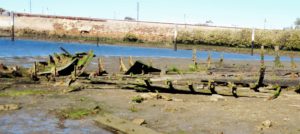
This photo of the Jervois Basin in 2002 can be found at https://www.toursa.com.au/listing/category/jervois-basin-ships-graveyard/ : –
Jervois Basin in 2002
(Source: https://www.toursa.com.au/listing/category/jervois-basin-ships-graveyard )
This photo of Jervois Basin in 2005 can be found in “Quality Assured: Shipbuilding in Colonial South Australia and Tasmania” by Rick Bullers: –
Mangrove regrowth is beginning to obscure the remains of the Alert
(Taken in 2005 by Jun Kimura)
Now I have typically gone from writing about the mangrove growth to writing about the changes to the wrecks themselves. It will be best if I duplicate these details in another article. I will just finish by adding that there are many (lots) of photos of the Trafalgar in “Redgum & Paddlewheels – Australia’s inland river trade” by Peter J. Phillips.

